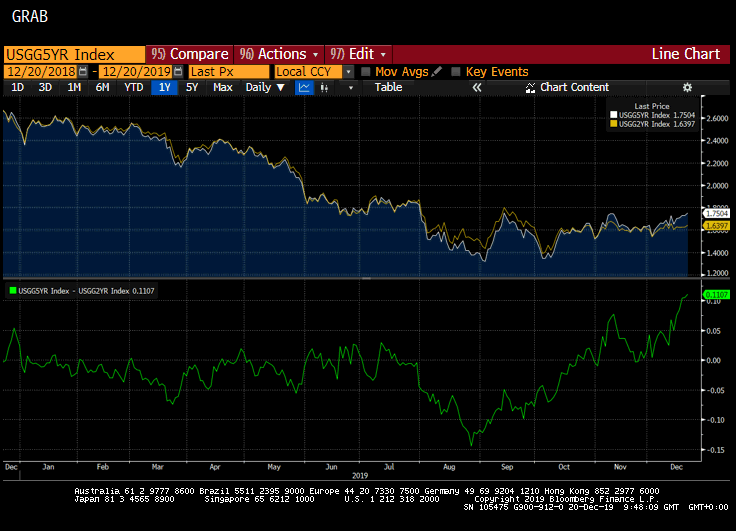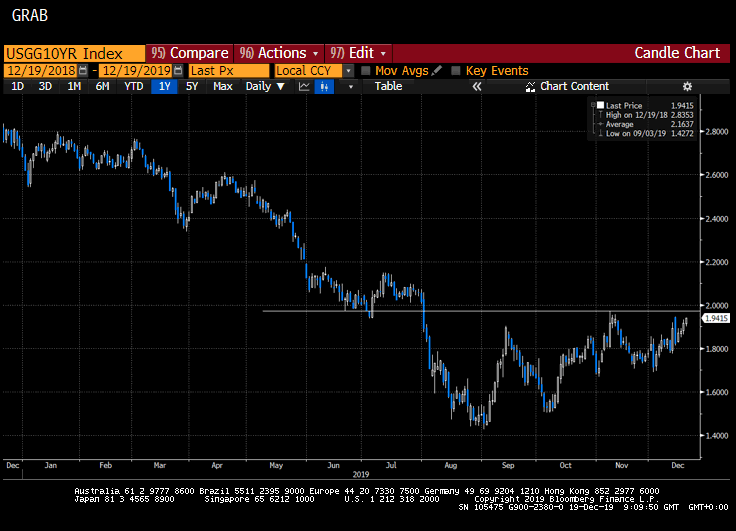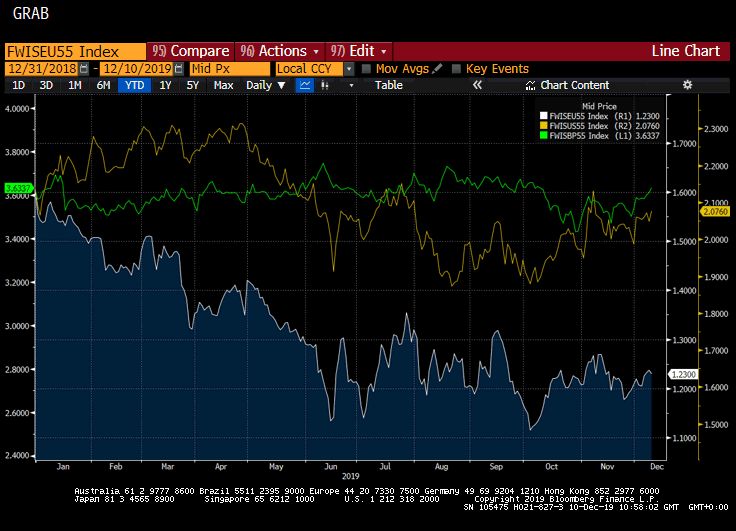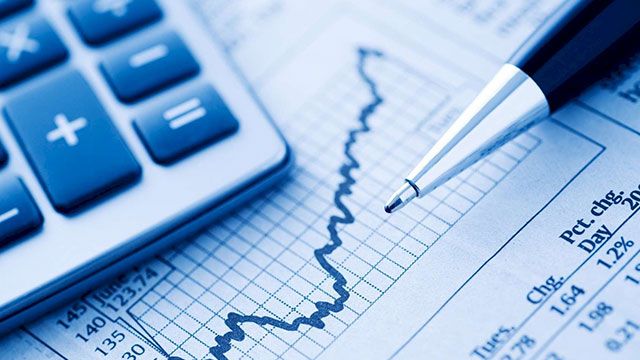Just over a year ago the US Federal Reserve had just raised rates for the fourth time against a backdrop of rising concern that they were moving too fast in normalising monetary policy at a time when there was increasing evidence of a slowdown in global trade, and a possible recession.
What was particularly noteworthy was while bond market indicators were flashing red, Fed officials were still pushing the line that we could well see three more rate rises in 2019, even if markets were slowly pricing out the prospect of such aggressive moves.
US officials it appears were taking the view that the resilience of the US economy could absorb the effects of further rate hikes, conveniently forgetting the fact that the global economy was dealing with problems of its own, brought about the US trade war with China and the EU.
This in turn helped push the US dollar up, as well prompting some anguish amongst some emerging market economies, particularly those with exposure to US dollar denominated debt. Not only was their cost of funding going up, but the value of their currencies was falling through the floor.
At the end of last year these fears that the Fed was overtightening were being borne out in the way the yield curve was flattening out, with the 5s/2s spread falling from 17bps in October 2018 to actually invert on the day of last year’s December Fed rate decision, and staying there, or close to zero as we entered 2019
These fears continued into 2019 as concerns over a recession dominated US and most other major bond markets, despite Fed chair Jay Powell’s sudden volte face at the beginning of this year, when he said the central bank would be patient on further rate rises, indicating that policymakers were having second thoughts about further rate hikes in the near term.
This change of tone along with three rapid rate cuts in succession, in July, September and October, saw the curve invert further, before a sharp rebound at the end of August which took us back into positive territory.
The rebound in yields would appear to have been down to a trade ceasefire between the US and China and the announcement of a resumption of trade negotiations in October.
This, along with continuing resilience in US economy data prompted a sharp rebound in the US 10-year yield which in the space of 12 months has slid from peaks of 3.25% in October last year to hit a low of 1.43% in September this year. Since then US yields have recovered somewhat but for the moment the 10-year can’t seem to get back above the 2% level.
This is likely to be a key level going forward, while the recovery in the yield curve would appear to suggest that recession is some way off for now.
That belief was reinforced by the recent US payrolls report which was about as good as it could have been with 266k new jobs added in November, while wage growth move higher to 3.2%.

Source: Bloomberg
The sharp fall in oil prices since last year has also helped in dampening inflation expectations over the last 12 months, after the peaks of $85 a barrel we’ve seen Brent prices stabilise for most of this year in a $15 range between $55 and $70 a barrel.
In a normal scenario bond yields tend to rise gradually the further out you go, and this upward gradient, called a rising yield curve, is an indicator that investors think the economy is operating without too many stresses.
If this behaviour starts to change and you get a flattening of rates, followed by an inversion where long term rates fall below short term rates that tends to be viewed as a negative sign that economic conditions are starting to deteriorate and a recession is on its way, and that longer-term inflationary pressures are likely to remain subdued.
As can be seen from the graph above fears of a recession saw yields flat line before dipping sharply before the rebound in August/September as concerns about an upcoming US recession have started to diminish.
While the scale of the rebound looks impressive, it still only puts 5 year rates modestly above the level of 2 year rates and gives an indication that investors have only become less pessimistic than they were back in August.
In terms of where investors see bond markets in 2020 the picture is much less clear but a quick look at the 10 year yield does give us some clues as to where the key risk levels are now.
As can be seen from the chart below the rebound from the September lows at 1.43% ran into resistance just below 2%, and this is likely to be a key barrier in terms of an indicator of interest rate expectations going forward. A move above 2% would be a key indicator of reduced stress in terms of economic conditions as well as reducing expectations around future US rate cuts.

Source: Bloomberg
It is also worth noting that despite the strong payrolls report in November US inflation expectations haven’t moved much beyond the peaks that we’ve seen in the second half of this year at just above 2.1%, and are still well below where they started this year.
This would therefore suggest that markets are not only pricing a slowdown in economic activity but are also pricing in a significantly more long-term benign inflation environment.
As regards future Fed policy it is likely to mean that the while the Fed appears to be on hold for now the market has little optimism that the so called “mid-cycle adjustment” that we’ve seen in the past few months will be the last of this particular rate cutting cycle.
For now markets appear to be pricing the likelihood that the Federal Reserve is likely to remain on hold until the end of Q1 at the earliest, though we should also bear in mind Q1 tends to, on a seasonal basis, be one of the weaker quarters for the US economy anyway.
With 2020 being an election year in the US we also need to be aware that it is in President Trump’s interests to keep the US economy growing all the way into the lead up of the November 3rd vote, and as such we could well see some measures designed to boost the economy, over the next few months. Trade is likely to be part of that equation with talks between China and the US likely to be dragged out over the course of the next few months.
Looking at inflation expectations elsewhere we’ve also seen a bit of a rebound in recent months but again we’re still well below where we were at the beginning of the year.
10 year bund yields are also lower now than when they started the year, but more importantly also off their lows, despite the European Central Bank announcing in September it was restarting its stimulus program, after finally acknowledging that it had erred in halting it at the end of 2018.
UK gilt yields have done slightly better, marginally higher than 12 months ago but like bunds also well down from their peaks in October at 1.71%, despite one rate rise this year.
Bond market inflation expectations of all the major bond benchmarks have had a mixed year with the US 5 year 5 year outlook not too dissimilar to the levels we saw this time last year, while the UK has also seen a similar flattish performance, reflecting an overall fairly benign outlook, steady at 3.6%.
EU 5 year 5 year inflation expectations on the other hand have dropped sharply from 1.6% at the beginning of the year to lows of 1.12% at the beginning of October, and now at 1.25%.

Source: Bloomberg
This slide in inflation expectations does not bode well for the euro area, indicating that it is sliding into a Japanification of yields and possible stagnation.
The risk is that it drags the rest of the world down with it, particularly since we are getting rising signs of deflation out of China, in the guise of weaker factory gate prices.
In an nutshell there seems little likelihood of any upside risk in rates on the part of central banks over the next 12 months with the real risk that we could see further interest rate reductions, or further measures to ease monetary policy.
Much will depend on how the global economy evolves over the next few months and while markets may still be expecting US rates to fall further, this may take some time to play out while US economic data remains strong. This probably won’t please President Trump, though he will no doubt blame any resultant slowdown and any stock market losses on the reluctance of the Fed to cut rates further.
Disclaimer: CMC Markets is an execution-only service provider. The material (whether or not it states any opinions) is for general information purposes only, and does not take into account your personal circumstances or objectives. Nothing in this material is (or should be considered to be) financial, investment or other advice on which reliance should be placed. No opinion given in the material constitutes a recommendation by CMC Markets or the author that any particular investment, security, transaction or investment strategy is suitable for any specific person. The material has not been prepared in accordance with legal requirements designed to promote the independence of investment research. Although we are not specifically prevented from dealing before providing this material, we do not seek to take advantage of the material prior to its dissemination.






